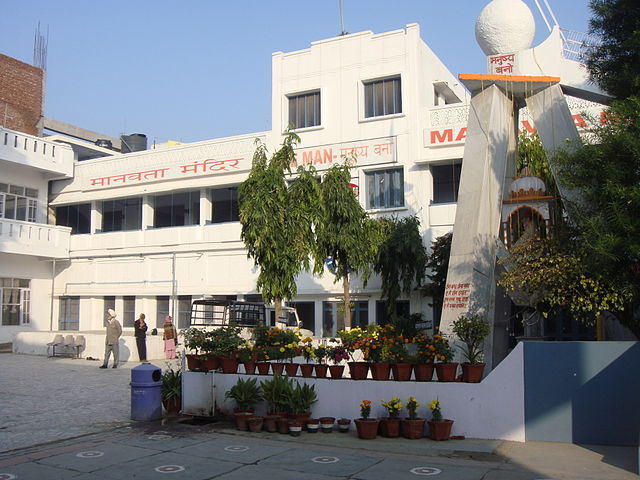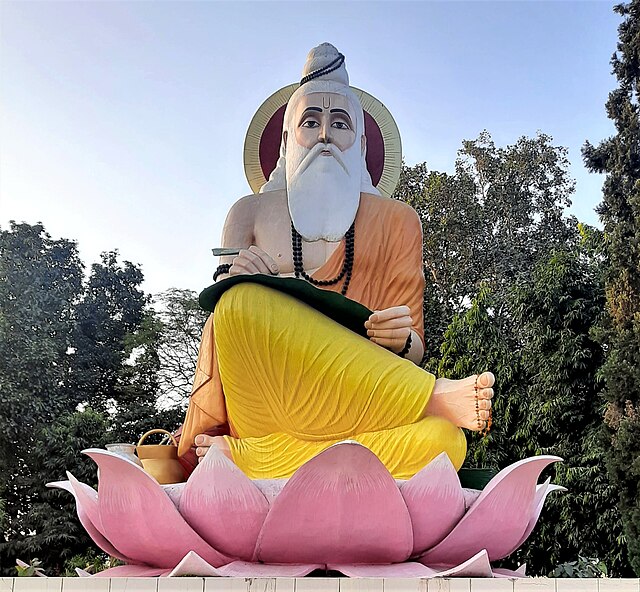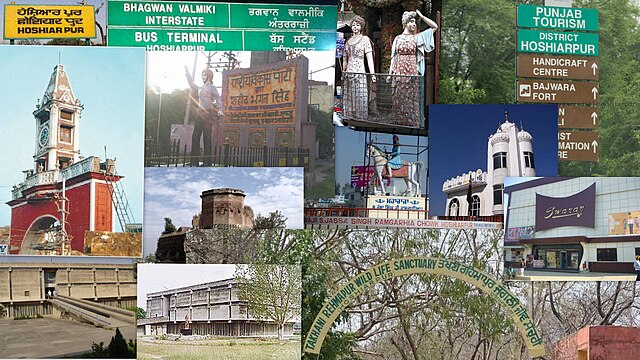Have you ever wondered what makes a small city in Punjab so special that it captures the hearts of everyone who visits? Welcome to Hoshiarpur, a mesmerizing blend of rich history, vibrant culture, and natural beauty that stands as one of Punjab’s most underrated gems. This enchanting city, nestled in the Doaba region of Punjab, offers visitors an authentic taste of Punjabi heritage while maintaining its unique identity.
Hoshiarpur isn’t just another dot on the map – it’s a living, breathing testament to India’s glorious past and promising future. From ancient temples that whisper tales of bygone eras to modern educational institutions that shape tomorrow’s leaders, this city seamlessly bridges the gap between tradition and progress. Whether you’re a history buff, culture enthusiast, or simply someone seeking an off-the-beaten-path adventure, Hoshiarpur has something extraordinary waiting for you.
Historical Significance of Hoshiarpur
Ancient Origins and Early Settlements
The story of Hoshiarpur begins centuries ago, with roots that stretch deep into India’s ancient past. Legend has it that the city was founded by a Rajput chief named Hoshiar Singh, though historical evidence suggests the area has been inhabited for much longer. Archaeological findings in and around the region point to settlements dating back to the Harappan civilization, making it one of the oldest continuously inhabited areas in Punjab.
During the medieval period, Hoshiarpur served as an important strategic location for various ruling dynasties. The city witnessed the rise and fall of empires, each leaving behind traces of their cultural influence. The Mughal period, in particular, saw significant development in the region, with several architectural marvels and administrative structures being established.
British Colonial Era Impact
The British colonial period marked a turning point in Hoshiarpur’s history. The city became an important administrative center under British rule, leading to the establishment of various government institutions and infrastructure projects. The colonial administration recognized Hoshiarpur’s strategic importance and invested heavily in its development.
During this era, the city also became a center for education and cultural activities. The British established several schools and colleges, many of which continue to operate today. This period also saw the emergence of freedom fighters from the region who played crucial roles in India’s independence movement.
Geographical Marvel: Location and Landscape

Strategic Location in Punjab
Hoshiarpur occupies a prime position in Punjab’s geography, situated in the northeastern part of the state. The city lies approximately 146 kilometers from Chandigarh and serves as the district headquarters of Hoshiarpur district. Its strategic location has made it a crucial link between the plains of Punjab and the hills of Himachal Pradesh.
The city’s geography is particularly fascinating because it sits at the foothills of the Shivalik Hills, creating a unique landscape that’s quite different from the typical flat terrain of Punjab. This positioning gives Hoshiarpur a distinct advantage in terms of climate, natural beauty, and agricultural potential.
Climate and Weather Patterns
What sets Hoshiarpur apart from other Punjabi cities is its pleasant climate, thanks to its proximity to the hills. The city enjoys a subtropical climate with three distinct seasons: summer, monsoon, and winter. Unlike the scorching summers experienced in other parts of Punjab, Hoshiarpur maintains relatively moderate temperatures due to its elevation and geographical position.
The monsoon season brings abundant rainfall, making the landscape lush and green. This favorable climate has contributed significantly to the region’s agricultural prosperity and makes it an attractive destination for tourists seeking respite from harsh weather conditions.
Cultural Heritage and Traditions
Festivals and Celebrations
Hoshiarpur comes alive during festivals, when the entire city transforms into a vibrant canvas of colors, sounds, and emotions. The celebration of traditional Punjabi festivals like Baisakhi, Diwali, and Holi takes on a special character here, blending local customs with broader cultural traditions.
One of the most significant celebrations is the annual fair at Devi Talab Mandir, which attracts thousands of devotees from across the region. During Navratri, the city buzzes with religious fervor and cultural programs that showcase the rich heritage of the area. These festivals aren’t just religious observances – they’re community celebrations that bring people together, regardless of their backgrounds.
Traditional Arts and Crafts
Wood Carving Industry
Hoshiarpur has earned a reputation as one of India’s premier wood carving centers. The city’s artisans have been perfecting this craft for generations, creating intricate designs and functional items that are sought after across the country and beyond. The traditional wood carving industry here specializes in furniture, decorative items, and architectural elements.
What makes Hoshiarpur’s wood carving unique is the attention to detail and the use of traditional techniques passed down through families. These artisans work with various types of wood, creating everything from simple household items to elaborate pieces of art that grace palaces and museums.
Handloom and Textile Work
The textile industry in Hoshiarpur represents another facet of its rich cultural heritage. Local weavers produce beautiful handloom fabrics, including traditional Punjabi suits, shawls, and other garments. The city’s textile work is characterized by vibrant colors, intricate patterns, and superior quality that reflects the skill and dedication of local craftspeople.
Tourist Attractions in Hoshiarpur

Religious Sites and Temples
Hoshiarpur’s spiritual landscape is dotted with numerous temples and gurudwaras that serve as centers of faith and community life. The Devi Talab Mandir stands as the most prominent religious site, dedicated to Goddess Durga. This ancient temple, surrounded by a sacred pond, attracts pilgrims from far and wide.
The Gurudwara Chhevin Patshahi is another significant religious site, associated with Guru Hargobind Sahib, the sixth Sikh Guru. These religious sites aren’t just places of worship – they’re repositories of history, architecture, and cultural traditions that have shaped the region’s identity.
Natural Attractions and Parks
Takhni-Rehmapur Wildlife Sanctuary
Nature lovers will find their paradise at the Takhni-Rehmapur Wildlife Sanctuary, located just outside the city. This sanctuary is home to a diverse range of flora and fauna, including several endangered species. The sanctuary offers excellent opportunities for wildlife photography, bird watching, and nature walks.
The sanctuary’s diverse ecosystem includes wetlands, grasslands, and forested areas, creating habitats for various wildlife species. Visitors can spot deer, wild boar, and numerous bird species while enjoying the tranquil natural environment.
Education Hub: Schools and Colleges

Notable Educational Institutions
Hoshiarpur has earned recognition as an important educational center in Punjab. The city hosts several prestigious institutions that attract students from across the region. The Government College Hoshiarpur, established during the British era, continues to be one of the leading educational institutions in the area.
The city also houses various technical institutes, teacher training colleges, and specialized institutions that contribute to human resource development in the region. This focus on education has created a culture of learning and intellectual growth that permeates the entire community.
Economy and Industries
Agriculture and Farming
Agriculture forms the backbone of Hoshiarpur’s economy, with the region being particularly famous for its high-quality agricultural produce. The favorable climate and fertile soil make it ideal for growing various crops, including wheat, rice, sugarcane, and various fruits and vegetables.
The district is particularly renowned for its citrus fruits, especially kinnow (a type of mandarin orange), which is exported to various parts of India and abroad. Dairy farming is another significant agricultural activity, with many local farmers involved in milk production and related activities.
Small Scale Industries
Beyond agriculture, Hoshiarpur has developed a robust small-scale industrial sector. The wood carving industry, as mentioned earlier, provides employment to thousands of artisans and contributes significantly to the local economy. The city also has small manufacturing units producing textiles, sports goods, and various consumer items.
These industries have created a entrepreneurial ecosystem that supports local employment and economic growth while preserving traditional skills and crafts.
Transportation and Connectivity
Getting to and around Hoshiarpur is relatively convenient, thanks to well-developed transportation infrastructure. The city is well-connected by road, with regular bus services linking it to major cities in Punjab and neighboring states. The Grand Trunk Road (GT Road) passes through the region, providing excellent connectivity.
The nearest railway station is in Jalandhar, about 30 kilometers away, from where regular train services connect to major Indian cities. For air travel, the closest airport is in Chandigarh, approximately 150 kilometers from the city.
Famous Personalities from Hoshiarpur
Hoshiarpur has been the birthplace and home of several notable personalities who have made their mark in various fields. The city has produced prominent politicians, artists, athletes, and intellectuals who have contributed to national and international recognition.
These personalities serve as inspirations for the local youth and demonstrate the potential that exists within this small but significant city. Their achievements have helped put Hoshiarpur on the national map and created a sense of pride among local residents.
Local Cuisine and Food Culture
No exploration of Hoshiarpur would be complete without delving into its incredible food culture. The city offers an authentic taste of Punjabi cuisine, with local specialties that reflect the region’s agricultural abundance and cultural preferences.
Traditional dishes like makki di roti with sarson da saag, various types of parathas, and rich dairy-based preparations are staples of local cuisine. The city’s sweet shops are famous for their traditional sweets and desserts, many of which have been perfected over generations.
Street food culture is equally vibrant, with local vendors offering everything from spicy chaat to refreshing lassi. The food here isn’t just about taste – it’s about tradition, community, and the celebration of life itself.
Modern Development and Future Prospects
While deeply rooted in tradition, Hoshiarpur is not resistant to change and modernization. The city has been witnessing steady development in infrastructure, technology, and urban planning. New educational institutions, healthcare facilities, and commercial establishments are changing the city’s landscape while respecting its historical character.
The government has been investing in various development projects aimed at improving the quality of life for residents and creating better opportunities for economic growth. These initiatives focus on sustainable development that balances progress with heritage preservation.
Travel Tips for Visiting Hoshiarpur
Planning a visit to Hoshiarpur? Here are some practical tips to make your journey memorable. The best time to visit is during the cooler months from October to March when the weather is pleasant for sightseeing and outdoor activities.
When it comes to accommodation, the city offers various options ranging from budget hotels to more comfortable guesthouses. Local transportation is primarily by auto-rickshaws and buses, which are affordable and convenient for getting around the city.
Don’t forget to shop for local handicrafts, especially the beautiful wood carvings that make perfect souvenirs. Also, be sure to try the local cuisine at traditional dhabas and restaurants for an authentic culinary experience.
Conclusion
Hoshiarpur stands as a testament to the rich cultural heritage and enduring spirit of Punjab. This remarkable city offers visitors a unique blend of history, culture, natural beauty, and modern amenities that create an unforgettable experience. From its ancient temples and traditional crafts to its educational institutions and natural attractions, Hoshiarpur represents the best of what small-town India has to offer.
Whether you’re seeking spiritual solace, cultural enrichment, or simply a peaceful getaway from the hustle and bustle of city life, Hoshiarpur welcomes you with open arms and warm Punjabi hospitality. As you walk through its streets, visit its markets, and interact with its people, you’ll discover that this hidden gem of Punjab has the power to touch your heart and create lasting memories.
The city’s journey from ancient settlement to modern educational and cultural center demonstrates the resilience and adaptability of its people. As Hoshiarpur continues to evolve and grow, it maintains its unique character and continues to be a source of pride for Punjab and India as a whole.
Frequently Asked Questions (FAQs)
Q1: What is the best time to visit Hoshiarpur?
A: The ideal time to visit Hoshiarpur is between October and March when the weather is pleasant and comfortable for sightseeing. During these months, temperatures are moderate, and you can enjoy outdoor activities without the extreme heat of summer or the heavy rains of monsoon.
Q2: What are the main attractions in Hoshiarpur for tourists?
A: The primary attractions include Devi Talab Mandir, various historical gurudwaras, Takhni-Rehmapur Wildlife Sanctuary, local wood carving workshops, and traditional markets. The city also offers beautiful views of the Shivalik Hills and opportunities to experience authentic Punjabi culture.
Q3: How is Hoshiarpur connected to major cities in India?
A: Hoshiarpur is well-connected by road through the Grand Trunk Road and regular bus services. The nearest railway station is in Jalandhar (30 km away), and the closest airport is in Chandigarh (150 km away). The city has good connectivity to Delhi, Chandigarh, Amritsar, and other major cities.
Q4: What is Hoshiarpur famous for in terms of handicrafts and industries?
A: Hoshiarpur is renowned for its wood carving industry, which produces intricate furniture and decorative items. The city is also known for its handloom textiles, sports goods manufacturing, and agricultural products, particularly citrus fruits like kinnow oranges.
Q5: Are there good educational opportunities in Hoshiarpur?
A: Yes, Hoshiarpur is considered an important educational hub in Punjab with several prestigious institutions including Government College Hoshiarpur, various technical institutes, and teacher training colleges. The city has a strong educational infrastructure that attracts students from across the region.

